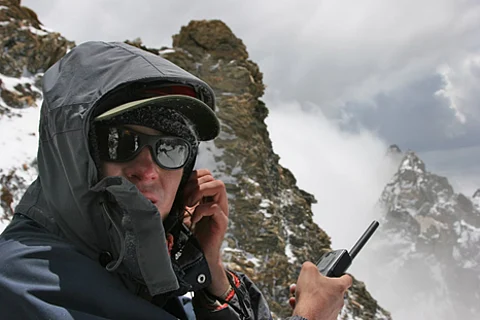

Ensuring safe communication for business operations and personal or family safety is critical in this interconnected world. In various places, lack of proper network coverage means that millions of people are cut off from communication services that could be critical to them. Satellite phones solve this challenge, ensuring global communication through satellite networks instead of traditional cell towers. In these cases, satellite phones become very useful for emergency responders, government, businesses, and individuals likely to operate in remote or disaster-stricken areas.
Satellite phones can go where nothing else can: the depths of forests, oceans, or disaster-stricken areas. A satellite phone affords you a means of communication wherever you may be. This connects travelers, emergency responders, and crews working in remote parts of the industry. Adventurers, researchers, and field scientists depend on satellite phones to relay messages from highly challenging environments, including those in polar and primary forests.
Satellite phones also serve other essential functions besides individual use for businesses operating in vast, deserted areas. Companies operating offshore oil rigs, deep-sea fishing vessels, and gigantic construction sites in deserted areas use satellite communication networks to help coordinate operations and keep employees safe. The ability for excellent efficiency allows this in a sector otherwise fraught with risks.
Government and military personnel working to manage strategic operations in remote places rely on secure and uninterrupted communication for efficient defense planning, intelligence gathering, and improving relations among nations. Instead of cellular networks, which can be disabled or tracked on a whim, satellite networks give this form of high-risk communication a semblance of safety and soundness in these situations.
Conventional communications networks may be rendered nearly inoperable following the impact of natural disasters such as hurricanes, earthquakes, and wildfires. Satellite phones are a line of communication that rescuer teams, administrative authorities, and all affected parties involved in the relief effort could use to coordinate humanitarian assistance and provide them with vital information as rapidly as possible. Aid agencies and first responders with satellite phones can move through dangerous terrain to request medical assistance and report real-time emergency updates.
During crises, emergency responders often work in areas where power and communication lines have been destroyed. In the ugliest of environments, satellite phones enable teams to communicate when terrestrial infrastructure cannot support wireless transmissions. This becomes a significant advantage in coordinating large-scale evacuations, managing medical emergencies, and restoring humanitarian aid to those in dire need.
Satellite phones empower individuals caught in disasters to seek assistance. Stranded at sea or trapped under debris, victims can employ satellite communications devices to call for assistance. This direct means of communication can be a lifesaver in some cases and renders satellite phones one of the most critical assemblages in disaster preparedness.
Communication is a very critical condition for survival amongst journalists, humanitarian workers, and military personnel attending the most dangerous working conditions. They rely on satellite communication for relaying information that cannot be transmitted without external means, documenting ongoing events, and carrying out key operations without tying themselves to the local telephone network that could be easily monitored. The disadvantages associated with flights scrambled by local authorities, as well as other issues relating to operational freedom, can now be eliminated via secure satellite channels.
By allowing global transmissions to originate from these regions, satellite phones can be utilized by journalists between censorship and communication blackouts imposed by various governments, thereby ensuring the transference of news that otherwise remains untold. Independent media and investigative journalists in Europe have invested in these communication means.
With satellite telephony available, humanitarian agencies in a conflict zone use it to coordinate relief operations, arrange medical assistance, and calm their teams. In critical emergencies, whether in refugee camps or dispatching essential supplies, satellite telecommunication is a kingdom of independence that ensures meaningful communications.
Many developing nations still lack functional cellular networks and thus cannot attend to some of their most basic needs related to healthcare and other utilities in rural areas. Satellite telephones are bridging this gap due to the least common intervention associated with traditional platforms, which fluctuate between being too expensive and less feasible.
Medical professionals in some parts of the world still have resorted to utilizing satellite phone clinic personnel in very remote villages for remote consultations with specialists, arranging patient transfers, or even coordinating remote health programs. Satellite connectivity will enhance emergency access to life-saving medical services and improve the health facilities available in far-flung communities. Likewise, teachers could apply them to provide distance learning for children living in rural villages, forever changing the educational landscape.
Satellite phones allow SMEs and budding entrepreneurs in rural settings to communicate with the market, suppliers, and finance houses, thus boosting economic growth. With improved communication, business ventures can widen their customer base and contribute widely to local economic growth.
Although satellite phones are much more costly than conventional ones, their communication coverage is broader than the latter because they can establish a connection when networks fail. From enabling emergency response efforts to supporting businesses in remote areas and improving personal safety, satellite phones have remained helpful to specific sectors and people. With the advancement of technology, satellite communication technology will continually improve accessibility, affordability, and functionality, thus making global connectivity smooth and reliable.
